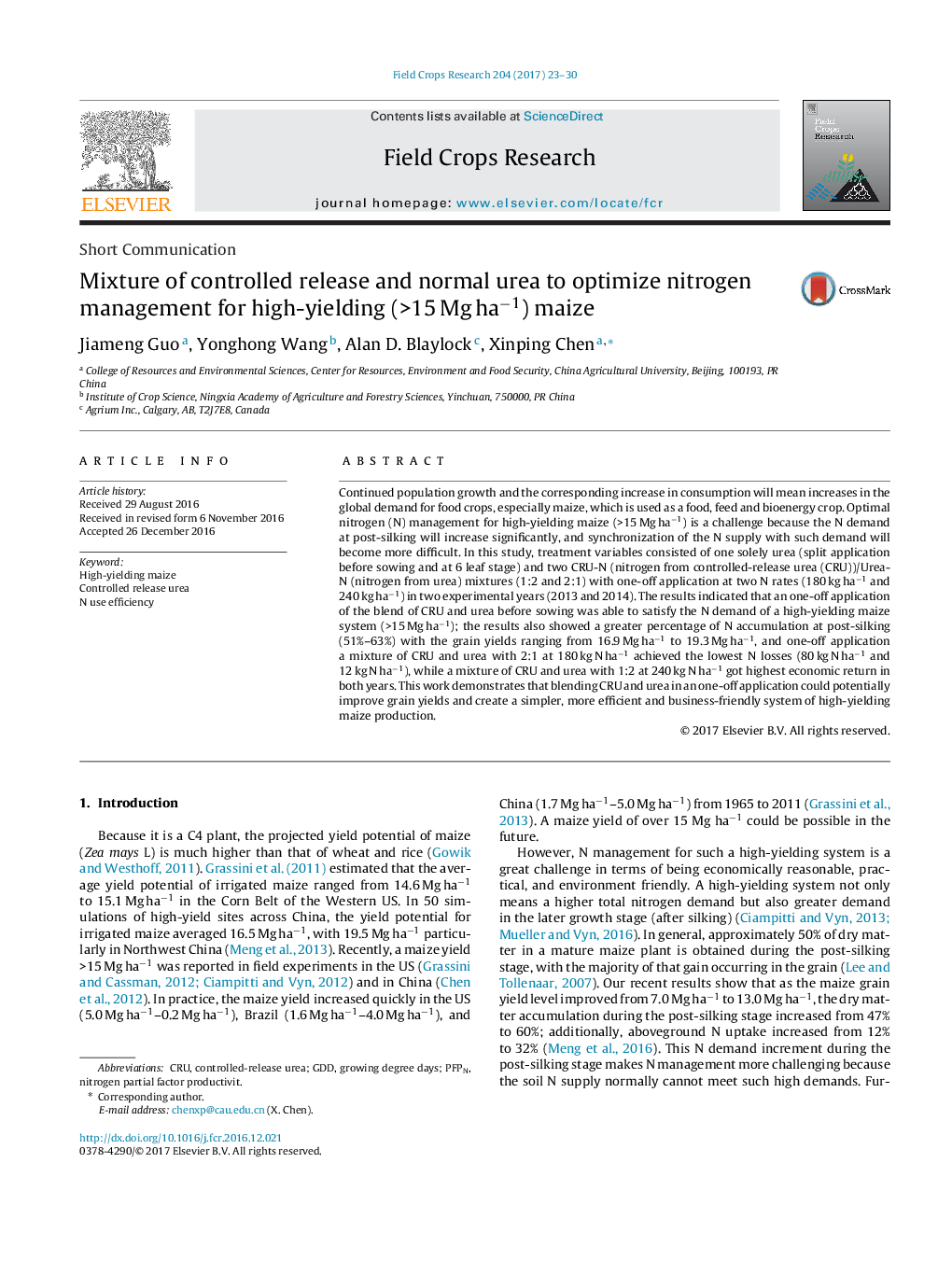| Article ID | Journal | Published Year | Pages | File Type |
|---|---|---|---|---|
| 5761607 | Field Crops Research | 2017 | 8 Pages |
Abstract
Continued population growth and the corresponding increase in consumption will mean increases in the global demand for food crops, especially maize, which is used as a food, feed and bioenergy crop. Optimal nitrogen (N) management for high-yielding maize (>15 Mg haâ1) is a challenge because the N demand at post-silking will increase significantly, and synchronization of the N supply with such demand will become more difficult. In this study, treatment variables consisted of one solely urea (split application before sowing and at 6 leaf stage) and two CRU-N (nitrogen from controlled-release urea (CRU))/Urea-N (nitrogen from urea) mixtures (1:2 and 2:1) with one-off application at two N rates (180 kg haâ1 and 240 kg haâ1) in two experimental years (2013 and 2014). The results indicated that an one-off application of the blend of CRU and urea before sowing was able to satisfy the N demand of a high-yielding maize system (>15 Mg haâ1); the results also showed a greater percentage of N accumulation at post-silking (51%-63%) with the grain yields ranging from 16.9 Mg haâ1 to 19.3 Mg haâ1ï¼and one-off application a mixture of CRU and urea with 2:1 at 180 kg N haâ1 achieved the lowest N losses (80 kg N haâ1 and 12 kg N haâ1), while a mixture of CRU and urea with 1:2 at 240 kg N haâ1 got highest economic return in both years. This work demonstrates that blending CRU and urea in an one-off application could potentially improve grain yields and create a simpler, more efficient and business-friendly system of high-yielding maize production.
Keywords
Related Topics
Life Sciences
Agricultural and Biological Sciences
Agronomy and Crop Science
Authors
Jiameng Guo, Yonghong Wang, Alan D. Blaylock, Xinping Chen,
